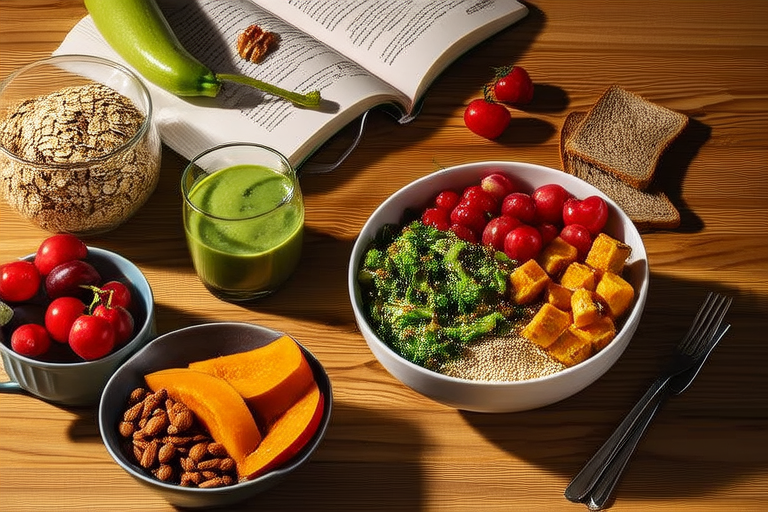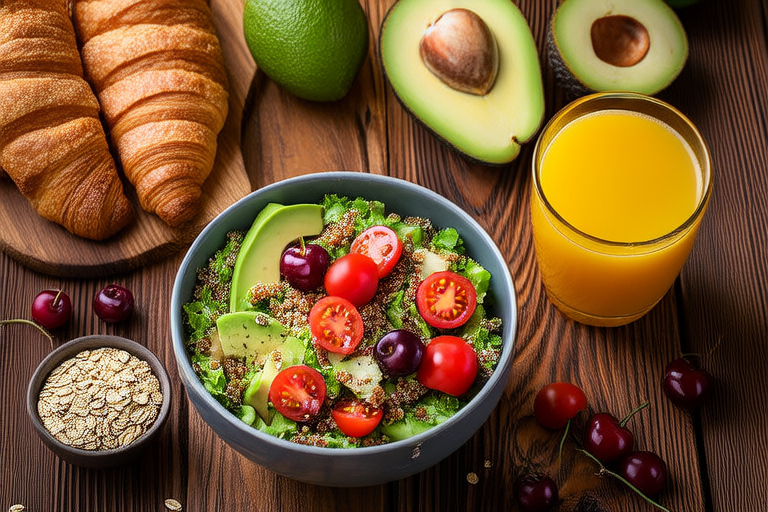Delicious and Nutritious: Top Recipe Recommendations for a Healthier You
In today’s fast-paced world, maintaining a balanced diet can often feel like an uphill battle. With endless temptations of processed foods and sugary snacks, it’s easy to lose sight of the importance of nutritious eating. However, nourishing your body with wholesome, nutrient-dense meals is one of the most impactful ways to support your overall health and well-being. Not only does healthy eating fuel your body with essential vitamins and minerals, but it also boosts energy levels, improves mental clarity, and enhances long-term vitality. The good news? Eating healthy doesn’t have to mean sacrificing flavor. By choosing the right ingredients and recipes, you can create meals that are as delicious as they are nutritious.
What Makes a Recipe Healthy and Delicious?
A truly healthy recipe strikes a balance between nutritional value and taste. It incorporates whole, minimally processed ingredients that provide essential nutrients while avoiding excessive sugar, unhealthy fats, and artificial additives. At the same time, a delicious recipe engages all your senses—offering vibrant colors, satisfying textures, and bold flavors that make every bite enjoyable. Key factors that contribute to both healthiness and tastiness include:
- Whole Foods: Prioritize fresh fruits, vegetables, whole grains, lean proteins, and healthy fats.
- Balanced Macronutrients: Ensure each meal contains a mix of carbohydrates, proteins, and fats to keep you full and energized.
- Natural Sweeteners: Opt for natural sweeteners like honey or maple syrup instead of refined sugars.
- Harnessing Herbs and Spices: Use herbs and spices to add depth and flavor without extra calories.
- Portion Control: Serve appropriate portions to avoid overeating, even with healthy foods.
Now that we’ve established what makes a recipe both nutritious and tasty, let’s explore some practical and mouthwatering ideas for breakfast, lunch, dinner, and snacks.
Breakfast: Start Your Day Right
Breakfast sets the tone for the rest of your day, providing the energy and nutrients you need to stay focused and active. Here are two delicious and healthy breakfast options:
1. Avocado Toast with Poached Egg
This simple yet satisfying dish combines creamy avocado, protein-rich eggs, and fiber-packed whole-grain bread. Avocados are rich in heart-healthy monounsaturated fats, while eggs provide high-quality protein and essential amino acids. Topping it off with a sprinkle of chili flakes and fresh herbs adds a burst of flavor.
Health Benefits:
- Supports heart health due to healthy fats.
- Promotes satiety and reduces cravings throughout the morning.
- Rich in vitamins E, B6, and folate.
2. Berry and Greek Yogurt Parfait
Layered with creamy Greek yogurt, antioxidant-rich berries, and crunchy granola, this parfait is a delightful way to kickstart your day. Greek yogurt is packed with probiotics that support gut health, while berries offer a dose of vitamin C and antioxidants.
Health Benefits:
- Boosts digestion and immunity.
- Low in sugar compared to traditional breakfast cereals.
- Provides calcium and protein for strong bones and muscles.
Lunch: Fuel for Productivity
A nutritious lunch keeps you energized and focused during the afternoon. These two recipes are perfect for workdays or weekends alike:
1. Quinoa Salad with Roasted Vegetables
This colorful salad features protein-rich quinoa, roasted seasonal vegetables, and a zesty lemon-tahini dressing. Quinoa is a complete protein, meaning it contains all nine essential amino acids, making it an excellent choice for vegetarians and meat-eaters alike.
Health Benefits:
- Packed with fiber for improved digestion.
- Supports muscle repair and growth.
- Rich in vitamins A, C, and K from the roasted veggies.
2. Grilled Chicken Wrap with Hummus
This wrap combines lean grilled chicken breast, hummus, spinach, and sliced cucumbers in a whole-wheat tortilla. Hummus provides plant-based protein and healthy fats, while spinach offers iron and other vital nutrients.
Health Benefits:
- Low in saturated fat and high in protein.
- Supports cardiovascular health thanks to omega-3 fatty acids in hummus.
- Portable and convenient for busy schedules.
Dinner: Savor the Evening
Dinner is an opportunity to unwind and enjoy a hearty, nourishing meal. These recipes will leave you feeling satisfied without weighing you down:
1. Baked Salmon with Asparagus
Baking salmon alongside tender asparagus creates a quick and elegant dinner option. Salmon is loaded with omega-3 fatty acids, which are crucial for brain function and reducing inflammation. Asparagus, on the other hand, is rich in folate and fiber.
Health Benefits:
- Supports cognitive function and mood regulation.
- Helps lower cholesterol levels.
- Gluten-free and suitable for various dietary preferences.
2. Lentil and Vegetable Curry
This flavorful curry combines lentils, coconut milk, and an array of vegetables like bell peppers, carrots, and spinach. Lentils are a fantastic source of plant-based protein and complex carbohydrates, making this dish filling and nutritious.
Health Benefits:
- High in iron and magnesium for energy production.
- Anti-inflammatory properties from turmeric and ginger.
- Vegan-friendly and budget-conscious.
Snacks: Smart Choices Between Meals
Healthy snacking helps curb hunger and prevents overeating at main meals. Try these nutritious and tasty snack ideas:
1. Apple Slices with Almond Butter
Sweet apple slices paired with creamy almond butter make for a satisfying snack. Apples are rich in fiber and antioxidants, while almond butter provides healthy fats and vitamin E.
Health Benefits:
- Supports heart health and skin radiance.
- Keeps blood sugar levels stable.
- Quick and easy to prepare.
2. Mixed Nuts and Dried Fruits
A small handful of mixed nuts and dried fruits offers a perfect blend of healthy fats, protein, and natural sweetness. Choose unsalted nuts and opt for dried fruits without added sugars for maximum benefits.
Health Benefits:
- Provides sustained energy for physical activity.
- Rich in magnesium and potassium for muscle function.
- Ideal for on-the-go snacking.
Tips for Incorporating These Recipes Into Daily Life
Transitioning to a healthier lifestyle doesn’t happen overnight—it requires consistency and planning. Here are some tips to help you incorporate these recipes into your daily routine:
- Meal Prep: Dedicate a few hours each week to preparing ingredients or entire meals in advance. This saves time and ensures you always have healthy options on hand.
- Experiment with Flavors: Don’t be afraid to try new spices, herbs, or cooking techniques to keep meals exciting.
- Listen to Your Body: Pay attention to how different foods make you feel and adjust accordingly. Everyone’s nutritional needs are unique.
- Stay Hydrated: Drink plenty of water throughout the day to complement your healthy eating habits.
- Practice Moderation: Allow yourself occasional indulgences to maintain a sustainable approach to wellness.
By embracing these strategies, you’ll not only improve your physical health but also cultivate a positive relationship with food. Remember, the journey to a healthier you is about progress, not perfection.
Conclusion
Eating healthy doesn’t mean giving up flavor or enjoyment—it’s about making mindful choices that benefit both your body and taste buds. From hearty breakfasts to satisfying dinners and smart snacks, the recipes shared here offer a roadmap to a more nutritious lifestyle. By incorporating these dishes into your daily routine and adopting practical habits, you can take meaningful steps toward long-term wellness. So roll up your sleeves, grab your apron, and start cooking your way to a healthier, happier you!










